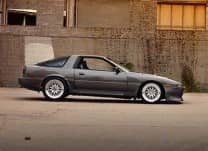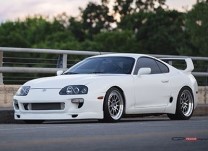- Introduction
- Maintenance
- Preparation
- Service specifications
- Diagnostics
- 2JZ-GE Engine
- 2JZ-GTE Engine
- 2JZ-GTE Turbocharging
- 2JZ-GE Emission control
- 2JZ-GTE Emission control
- 2JZ-GE SFI
- 2JZ-GTE SFI
- Cooling
- Lubrication
- Ignition system 2JZ-GE
- Ignition system 2JZ-GTE
- Starting system
- Charging system
- Clutch
- W58 manual transmission
- V160 manual transmission
- A340E 2JZ-GE automatic transmission
- A340E 2JZ-GTE automatic transmission
- Propeller shaft
- Suspension and axle
- Brake system
- Steering
- Supplemental restraint system
- Body electrical system
- Body
- Air conditioning system
Carry out troubleshooting in accordance with the procedure on the following page. Here, only the basic procedure is shown. Details are provided in each section, showing the most effective methods for each circuit. Confirm the troubleshooting procedures first for the relevant circuit before beginning troubleshooting of that circuit.
| Vehicle Brought to Workshop ⇓ Customer Problem Analysis ⇓ | ||
| Symptom Confirmation and Diagnostic Trouble Code Check | ⇐ Symptom Simulation | |
| ⇓ | ║ | |
| Diagnostic Trouble Code Chart | ║ | |
| ║ | ⇓ | |
| ║ | Problem symptoms table | |
| ⇓ | ⇓ | |
| Circuit Inspection or Parts Inspection ⇓ Repair ⇓ Confirmation Test ⇓ End | ||
- 1
Ask the customer about the conditions and the environment when the problem occurred. - 2, 3
Confirm the symptoms and the problem conditions, and check the diagnostic trouble codes. (When the problem symptoms do not appear during confirmation, use the symptom simulation method described later on.) - 4, 5, 6
Check the results obtained in Step [2], then confirm the inspection procedure for the system or the part which should be checked using the diagnostic trouble code chart or the matrix chart of problem symptoms. - 7
Check and repair the affected system or part in accordance with the instructions in Step [6]. - 8
After completing repairs, confirm that the problem has been eliminated.
(If the problem is not reproduced, perform the confirmation test under the same conditions and in the same environment as when it occurred for the first time.)




